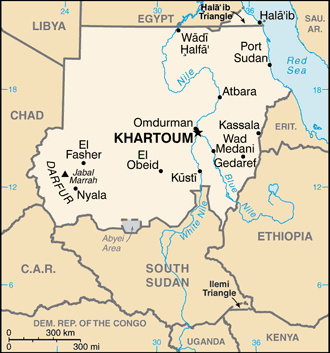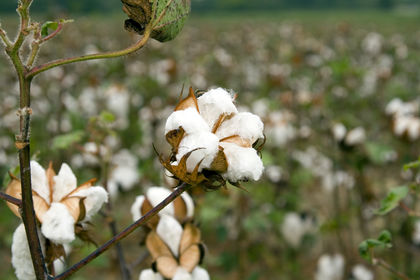This morning, I read an article about how Sudanese
women are using secret Facebook groups to post pictures of police and others
abusing protestors to identify them. Not only did these women unload on the
contact info, but other tidbits like previous employers, where they went to
college, families, friends, ex-girlfriends, and even down to what color their
front door is. What led to these protests in the first place? Mainly, I’m
gathering it’s a hodgepodge of garbage policies against women, sky-high
inflation, and inaccessibility for basic goods and services. (The government
even cut their Internet off, so they immediately went to VPN connections. Haha,
nice try. “Nevertheless, she persisted.”)
 |
| image from an Al Jazeera article |
The name Sudan is stemmed from its location south
of the Sahara desert and originally meant “land of the Blacks.”
Sudan is a rather large country in the northeast
corner of Africa. It’s surrounded by Egypt to the north; the Red Sea, Eritrea,
and Ethiopia to the east; South Sudan and Central African Republic to the
south; and Chad and Libya to the west. Most notably, the White and Blue Nile
Rivers meet together in the city of Khartoum. The land has deserts, mountains,
and plains and is rich in mineral deposits. The southern part gets more rain
than the north, and there are actually swamps and rainforests in the south. The
north is mostly desert and is plagued by sandstorms (called haboob – hee hee) that
can be so thick that it blocks out the sun.
 |
| Check out this haboob hitting Khartoum |
As the Sahara began to dry out much of the lands of
northern Africa, people started settling closer to the fertile lands of the
Nile. The Kingdom of Kush laid its stakes at the point where the White Nile and
Blue Nile met. It was even mentioned in the Bible. Other Nubian kingdoms
emerged and incorporated into others. Initially, they held off Arab expansion
in the area and Christianity prevailed. Nubians developed their own language,
and women held a high social status that included owning land, making their own
financial decisions, and education. Around the 11th and 12th
centuries, many of these kingdoms started to fall, some to Arab leaders and
some to other African peoples (mainly the Funj). Between 1500-1700s, the Funj
expanded and then saw the rise of Islam in this area. During the 1820s, the
Ottoman ruler of Egypt invaded the northern part of Sudan. By the 1870s, the
Mahdist forces essentially forced the people to adhere to Islam or be killed.
Sharia Law took over and is still in place today. They ended up invading
Ethiopia, and the British stepped in and fought for control against the French
and Belgians. Around the turn of the 20th century, Sudan was
controlled jointly by Egypt and Britain (because being controlled by one
country doesn’t suck enough). The British basically divided it into two sections:
north and south. This lasted until they gained their independence in 1956. There
were several coups during the first several decades, and then Col. Omar
al-Bashir declared himself the president in 1989. (And he’s still there.) Things
went downhill after he forced a one-party system and a pro-Islam government,
favoring Sudanese Arabs over non-Arab Sudanese. This contributed to the War in
Darfur (on the western side of the country). This conflict is seen as a
genocide, and the Janjaweed (an Arab-speaking nomadic militia) is often at the
heart of these acts of brutality. A peace agreement was finally signed in 2006.
 |
| Khartoum |
The capital city, Khartoum, is divided by two
rivers: the White Nile and the Blue Nile. Bridges connect many parts of the
city together across both rivers. This city of 5.2 million people was only
established since 1821; however, it was just north of the far more ancient city
of Soba (not to be confused with the Japanese noodle). Today, the city is the
center of government, transportation, media, education, and commerce.
Sudan was once considered the 17th
fasted growing economy roughly 10 years ago (2010), and it was mostly in oil.
However, when South Sudan broke away, it took with it nearly 80% of their
oilfields. This left the country in what’s called stagflation, where the
inflation is high and the economic growth slows. Up until the discovery and
establishment of the oil industry, agriculture has been the main economic
driver. However, years of drought and a weakening of global agricultural prices
crippled their staples. They have started to develop some hydroelectric dams
along the rivers. Even at that, a large portion of the people live below the
international poverty line (ranked at less than US$1.25/day).
The vast majority of Sudanese follow Islam (nearly
97%), mostly as Sufi or Salafi Muslims. Smaller groups of Christians do exist
in Sudan, mainly following Protestantism or Roman Catholicism, although there
are still some pockets of Greek Orthodox, Coptic Orthodox, Eritrean Orthodox, Ethiopian
Orthodox, Anglican, and other denominations of Christianity.
After a change in their constitution in 2005, the
official languages are Arabic and English. The most widely spoken language is a
variety of Arabic called Sudanese Arabic. This variety borrowed quite a bit of
vocabulary from other regional languages (namely Mabang, Nobiin, Fur, and
Zaghawa) that it’s created quite a unique version of Arabic. In areas along the
Red Sea, the Beja language can be heard while the Fur language is spoken in the
Darfur region.
Most people think of Egypt when they think of
pyramids, but Sudan has its own pyramids, too. Located near the city of Meroë,
these pyramids are a collection of 200 pyramids built over 2000 years ago. The
Meroitic Kingdom, in the eastern part of the country, ruled that area for
nearly 900 years. Another archeological site called Kerma is about 5000 years
old and also includes a large tomb known as Western Deffufa. Sudan’s culture
extends back to antiquity, and it’s certainly been in the news during recent
years (not quite for positive stories, though). But it’ll be interesting to see
the cultural influences behind Sudan today.



_002.jpg/300px-Al-Mak_Nimir_Street_(Khartoum)_002.jpg)






